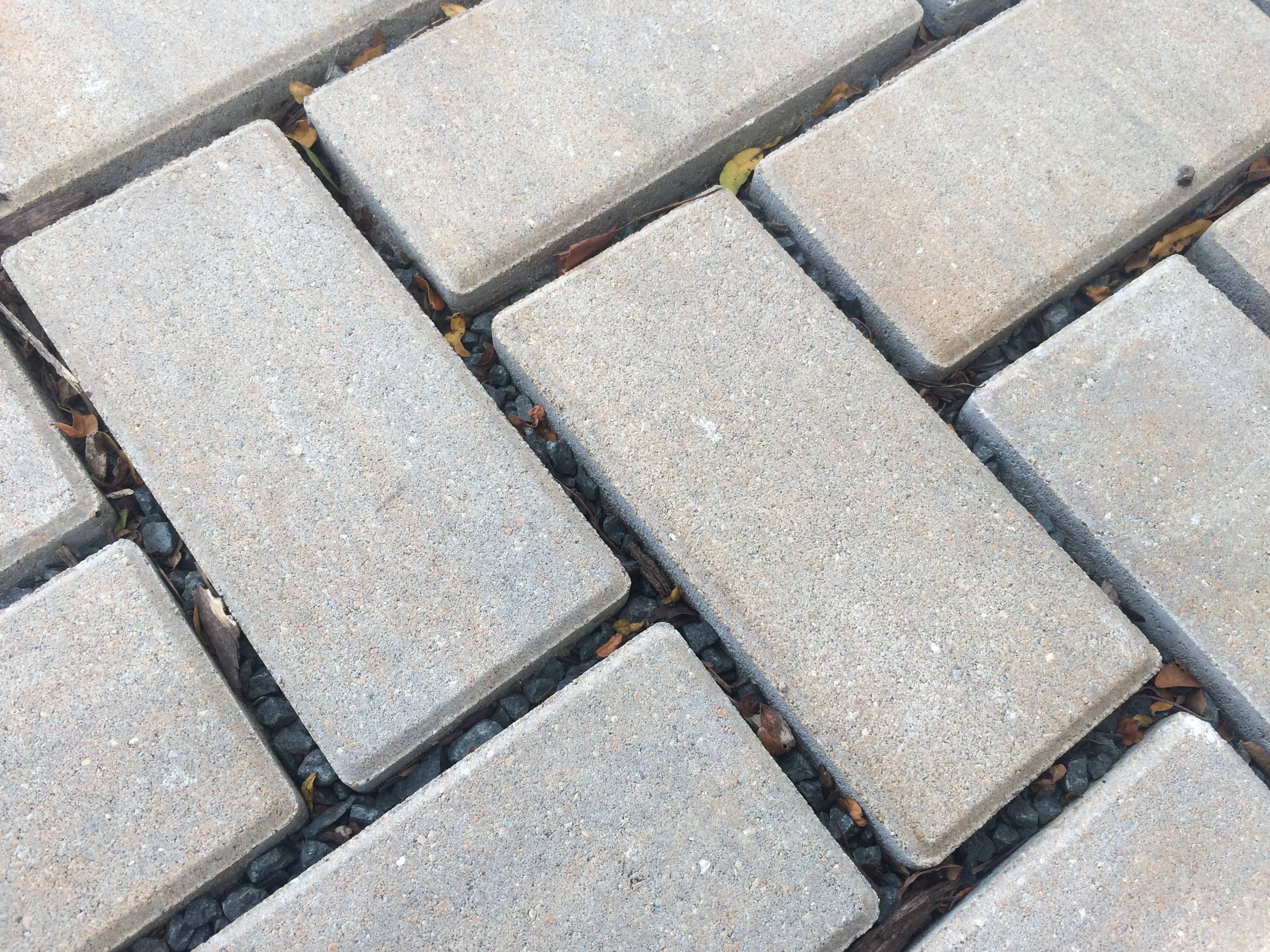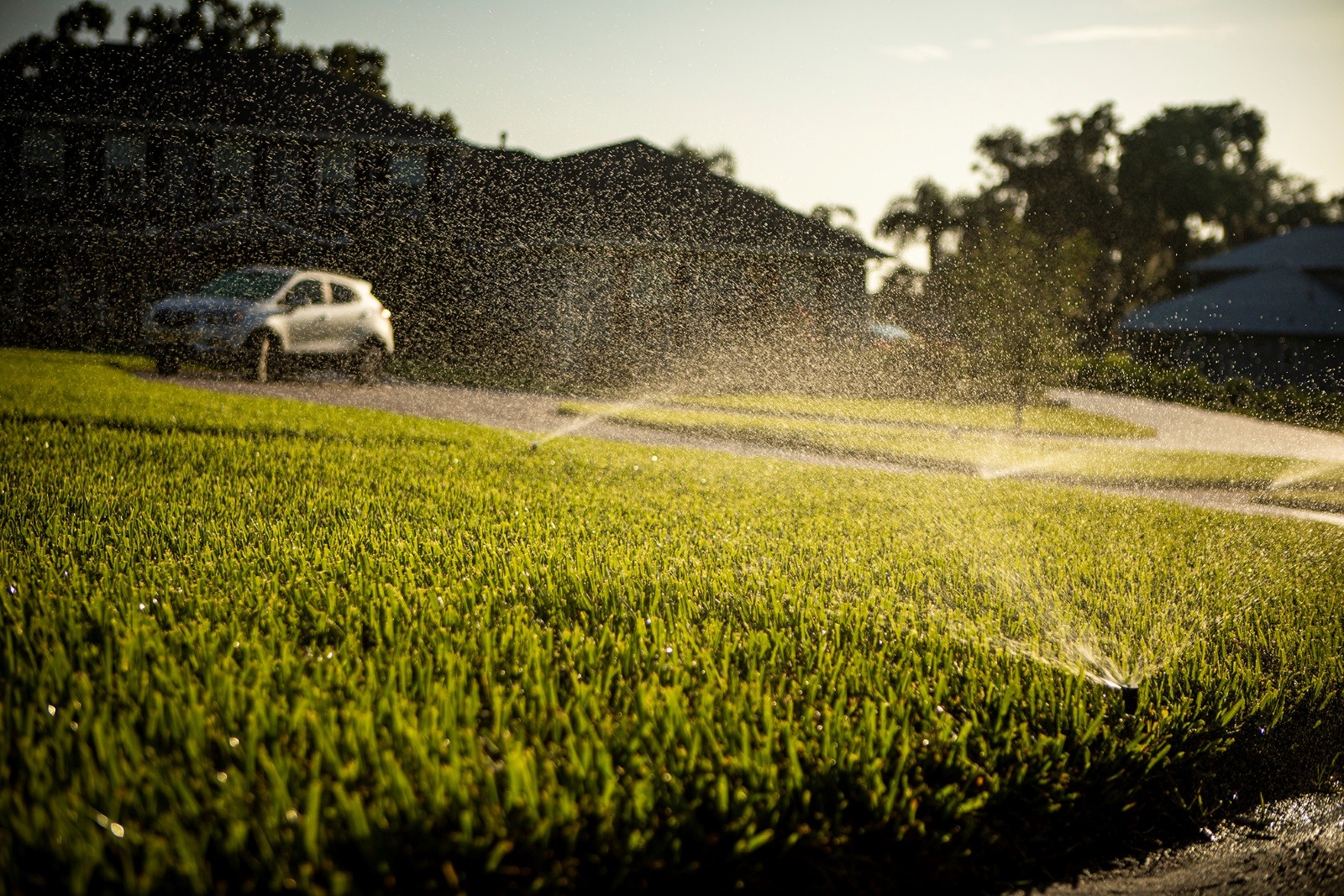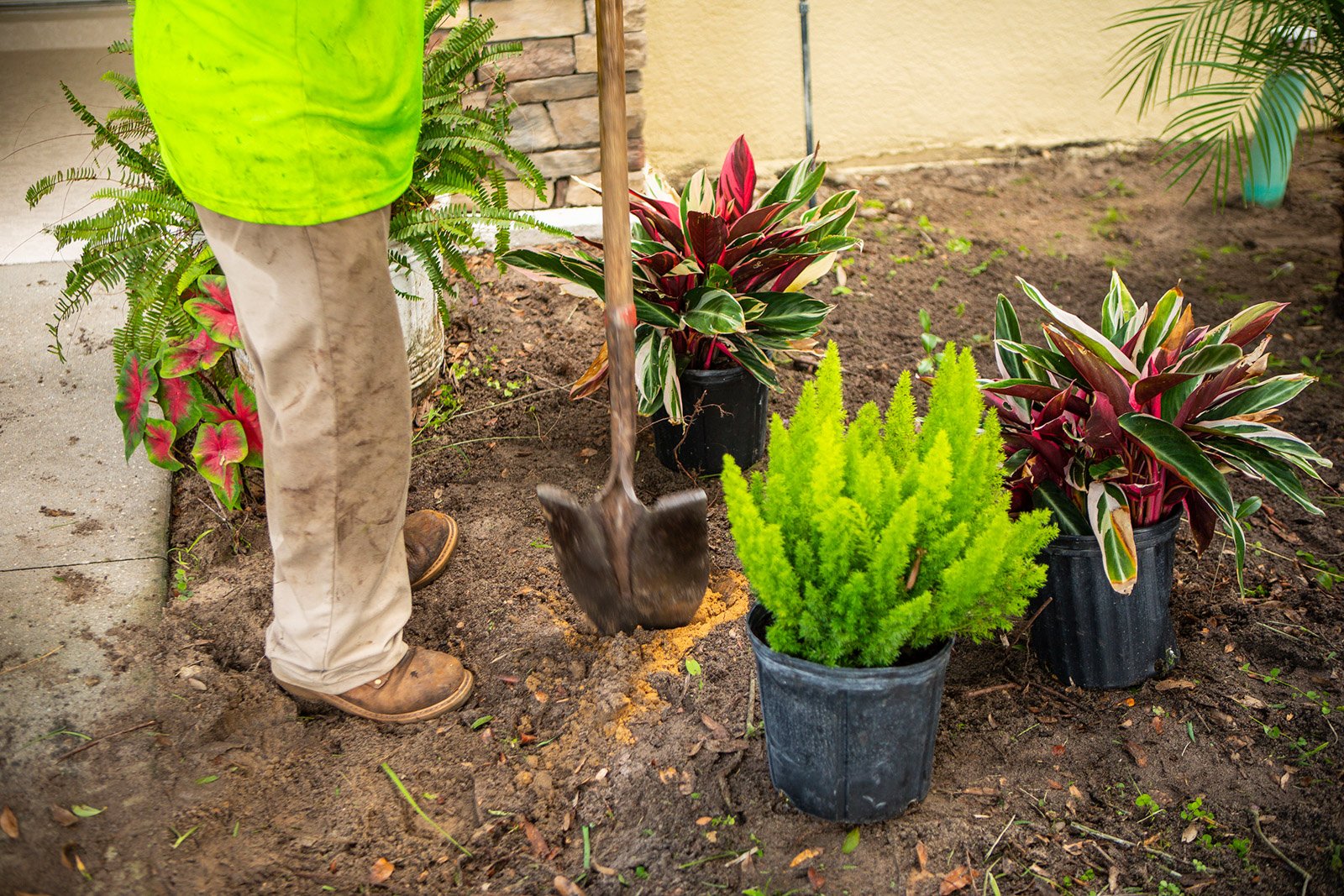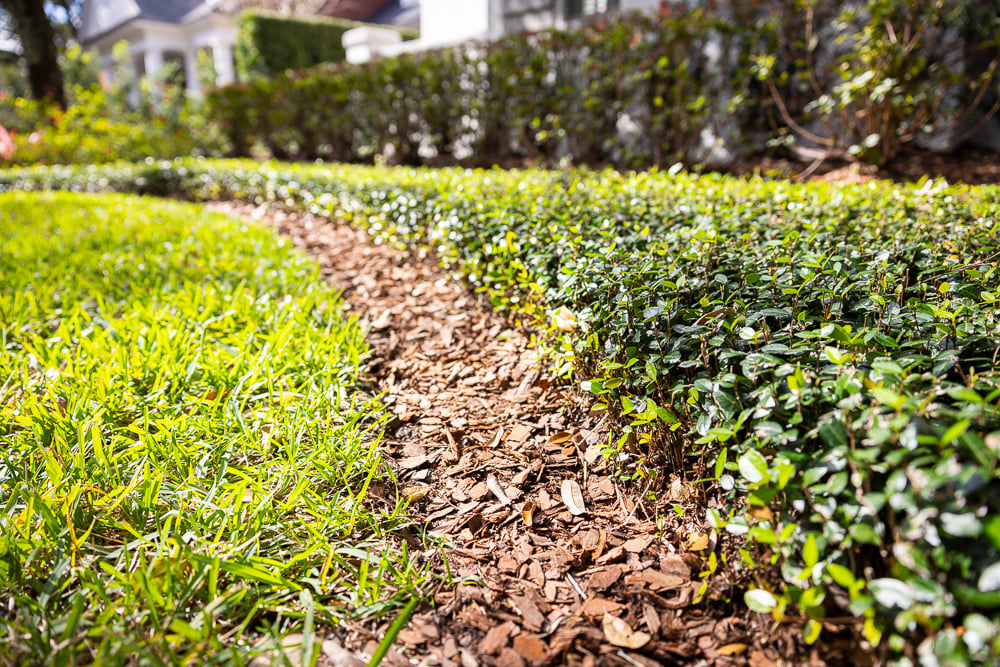The weather’s getting wilder out there.
How secure is your landscaping if a storm comes roaring through?
You want to make landscaping choices that have a better chance of standing up to hurricane-force winds, from strategically planted trees to the sturdiest fencing to mulch that doesn’t become a whirling weapon of destruction in high winds.
Check out these landscaping safety tips for hurricanes:
1. Avoid Planting Near Structures or Power Lines
Planting a new tree? Make sure it won’t grow too close to structures or power lines to avoid extra disaster if it topples in a storm.
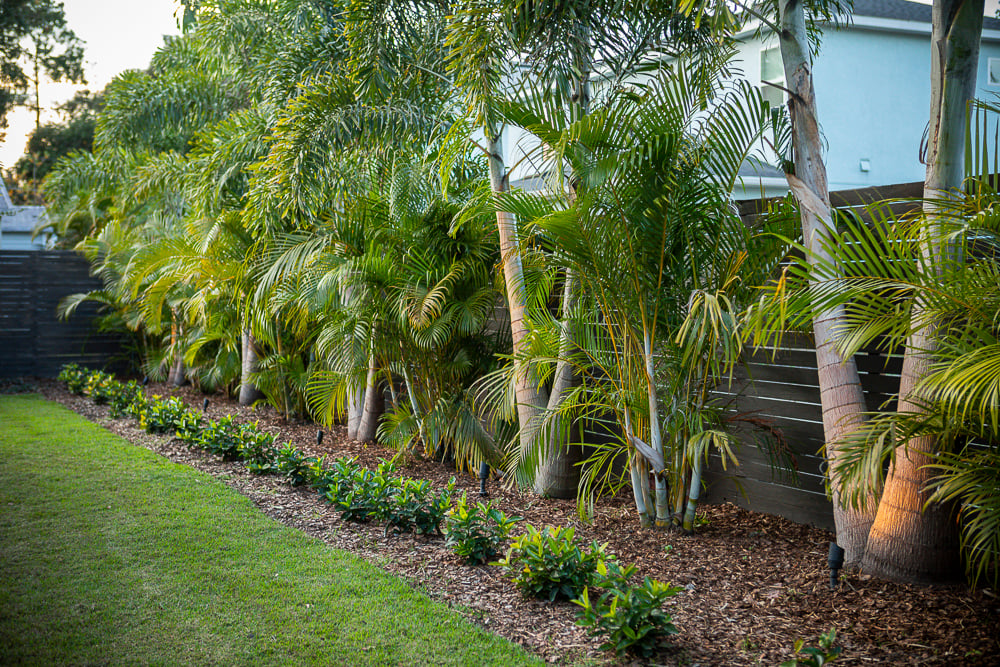
Take a good look around your property. If you already have a tree in a precarious position, consider having it removed or transplanted elsewhere.
2. Landscaping for Storms: Wrap ‘Em Up
Wrap tender plants with burlap and secure them with string or twine to protect their foliage before a storm hits.
3. The Sturdiest Fencing? It Might Surprise You
Put down the hammer. A big, solid wood fence isn’t your safest bet in a Central Florida wind storm.
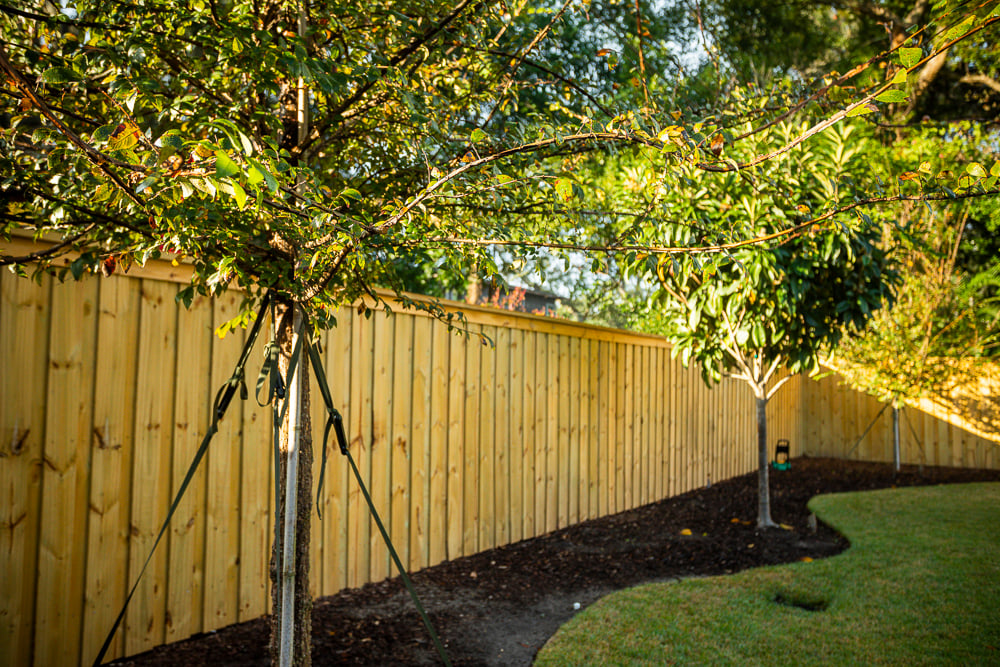
You actually want a fence full of holes, so wind flows through it. Think chain link or lattice, with plenty of openings that allow wind to blow through.
These fences are less likely to tumble down, making them safer choices for storm-resistant landscaping.
4. Landscaping for Storms: Skip the Hard Mulch
Imagine you’re standing out in a wind storm being pummeled with mulch. What kind of mulch would you want it to be? (Also, why aren’t you inside?)
Hard mulch like river rock and pea gravel can cause a lot of damage during hurricane-force winds, slamming into windows and against cars.
Soft mulch like shredded bark is a safer choice for hurricane-resistant landscaping.
5. Five Trees Are Tougher Than One
A group of trees is sturdier in high winds than one standing alone, and a better choice for storm-resistant landscaping. They help protect each other, as well as protecting property and other plants.
6. Secure the Heavy Stuff
Landscaping safety tips for hurricanes always include securing loose objects. You’d be surprised how even heavy elements of your landscaping can go flying during hurricane-force winds. Don’t assume it’s too heavy to budge.
Stow away benches, furniture, bird baths, garden statues, grills and wheelbarrows, in addition to the obvious things like patio umbrellas.
7. Time for Sturdy Stakes
Protect small trees by tying them to 2x4s pounded deep into the ground. Use strong rope but allow a little give so the trees can move a bit.
8. Loose Limbs? Get to Them Before the Wind Does
Landscaping for storms includes patrolling your Central Florida property for dead tree branches, hanging palm fronds or other loose landscaping that could become dangerous projectiles in high winds.
9. Keep Landscaping Healthy Year-Round
Landscaping for storms actually happens year-round, by keeping your landscaping healthy and strong so it can stand up to whatever nature dishes out.
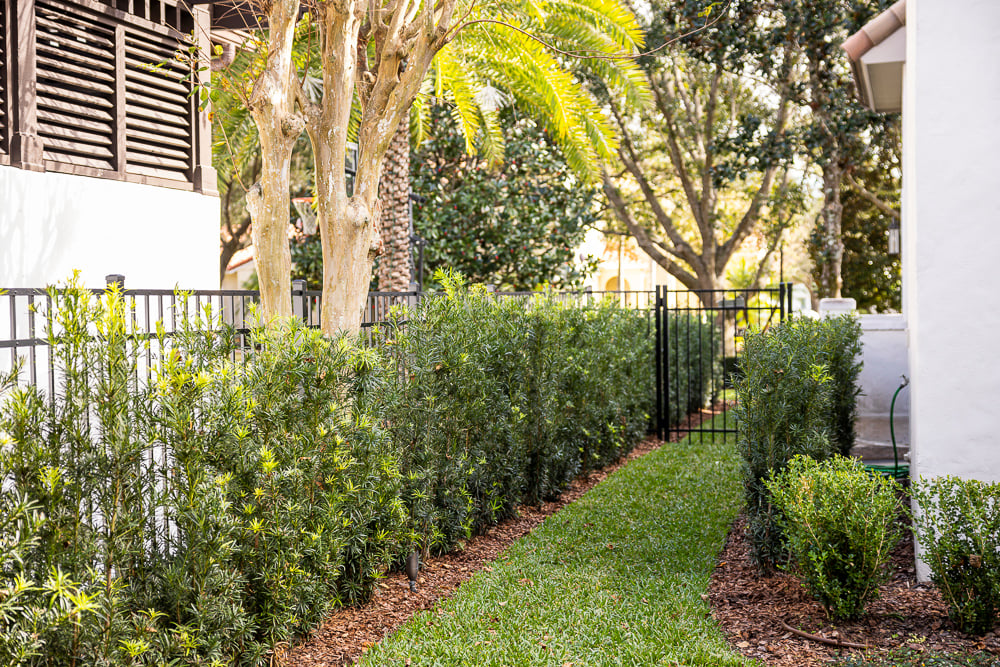
Healthy trees and shrubs, properly pruned, can better withstand high winds and will recover more quickly than weak, neglected plants.
Need More Tips for Storm-resistant Landscaping in Central Florida? Trust Ground Source
Landscaping safety tips for hurricanes involves a whole slew of elements, from plant choices to fence design to mulch installation.
It’s a job for a full-service landscaping company with skills and experience in all areas of your outdoor space.
Not all landscaping companies are full-service landscaping experts. Look for one that brings a wide-range of expertise to your hurricane-resistant landscaping needs.
We’re landscape experts, but our skills don’t stop there. We’re with you every step of the way as you plan your perfect outdoor space.
Sod, irrigation, landscape design: Let us transform your landscape from an embarrassing eyesore to a place you spend every spare minute.
Are you ready to enjoy the vibrant, impressive landscape you've always wanted? Request a quote today! We’ll help you review your options and then transform your property.




